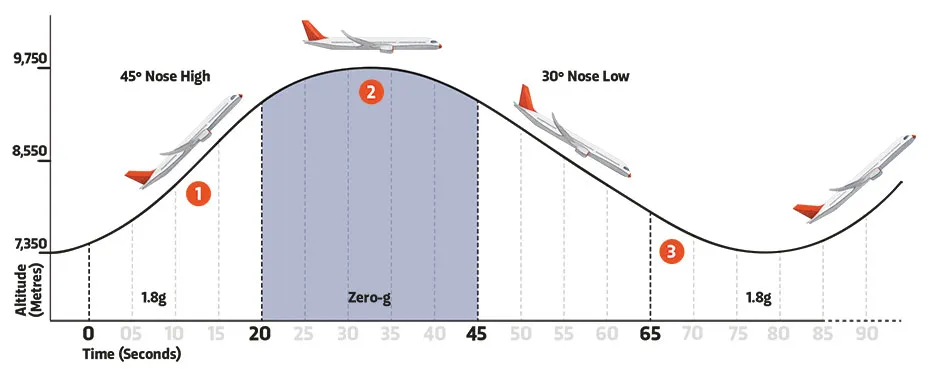On a standard aeroplane flight, you experience two forces in the vertical direction: the Earth’s gravity, which pulls you (and the plane) downwards, and the plane’s lift, which pushes upwards against you. If the aeroplane was to go into freefall, both you and the plane would experience the same gravitational acceleration downwards, but the plane would no longer provide the upwards force to cancel it out. This would give you the experience of weightlessness, and you’d float around inside the cabin.

1
Ascent
The plane climbs 2,400 metres, from 7,350 to 9,750 metres, at a 45° angle to gain height for the manoeuvre.
2
Freefall
As the plane nears the top of its trajectory, the engines are cut back. The plane coasts to its highest point and begins to fall, while the passengers inside experience weightlessness.
3
Pull up
The plane pulls out of its 30° dive and the passengers experience of g-force of 1.8 as they climb again. This sequence is repeated as many as 60 times in a single flight.
